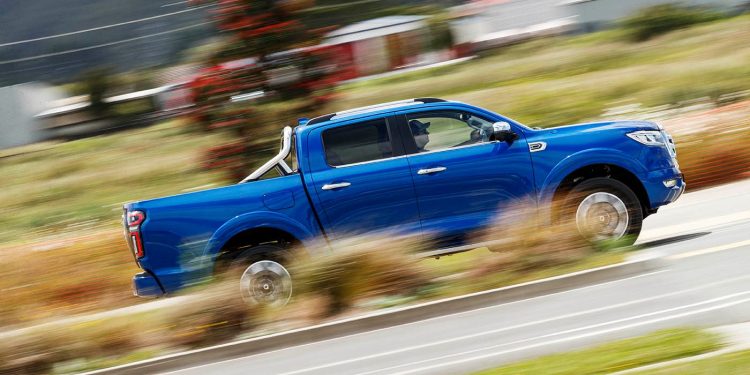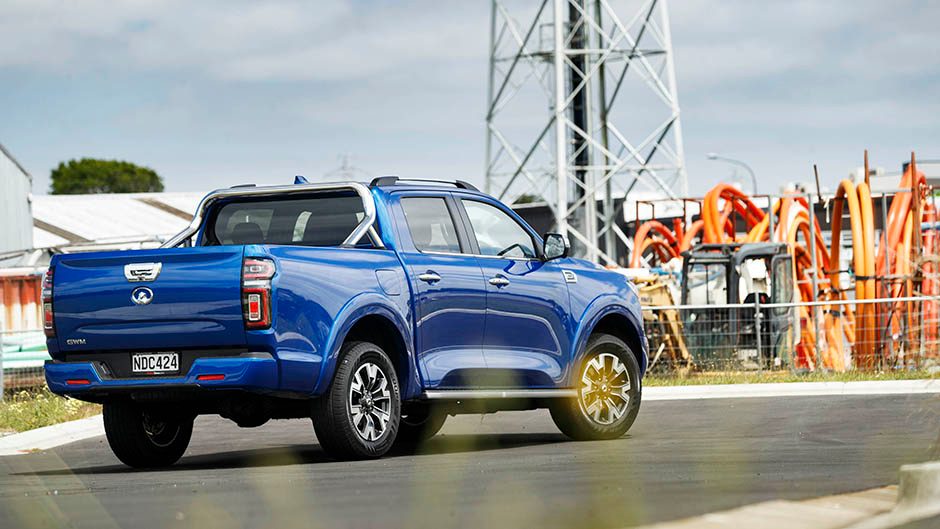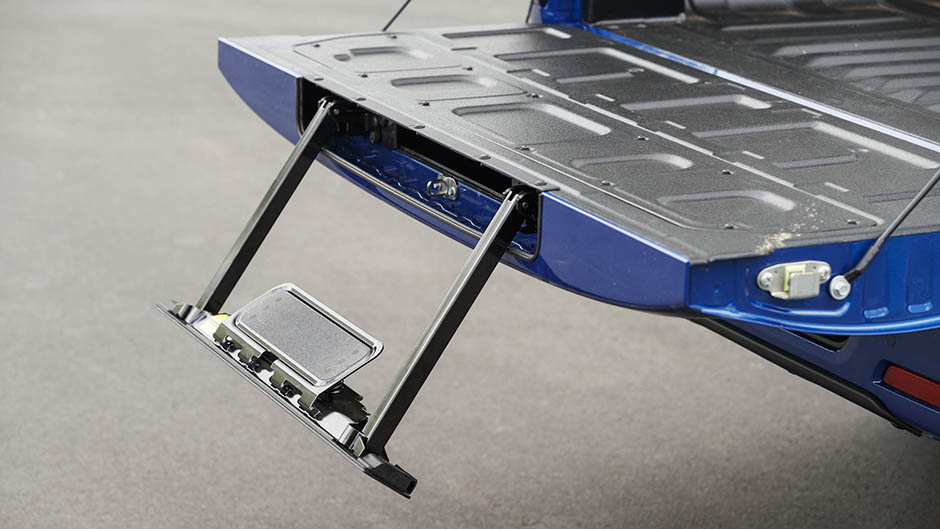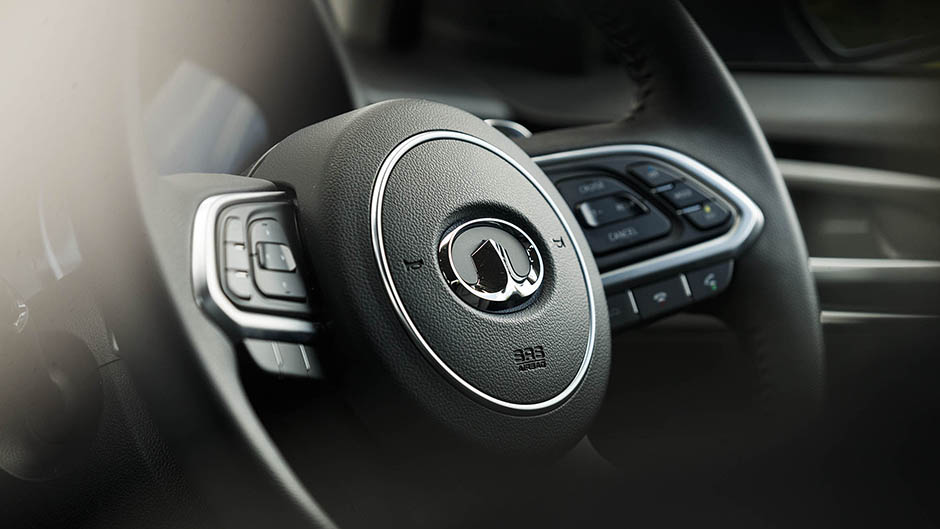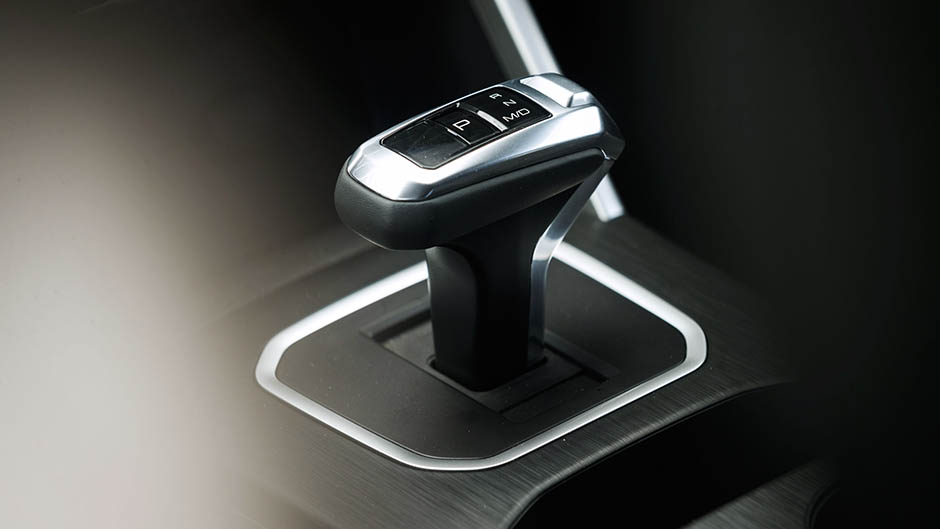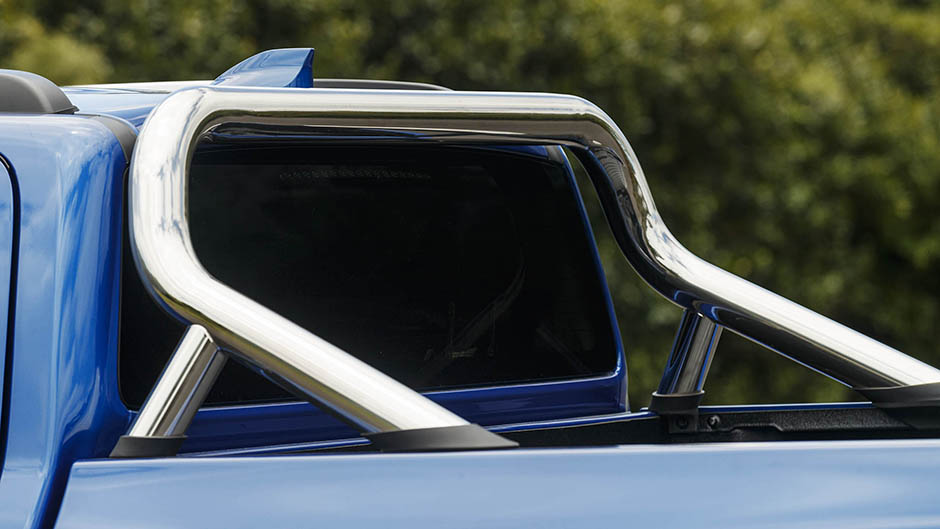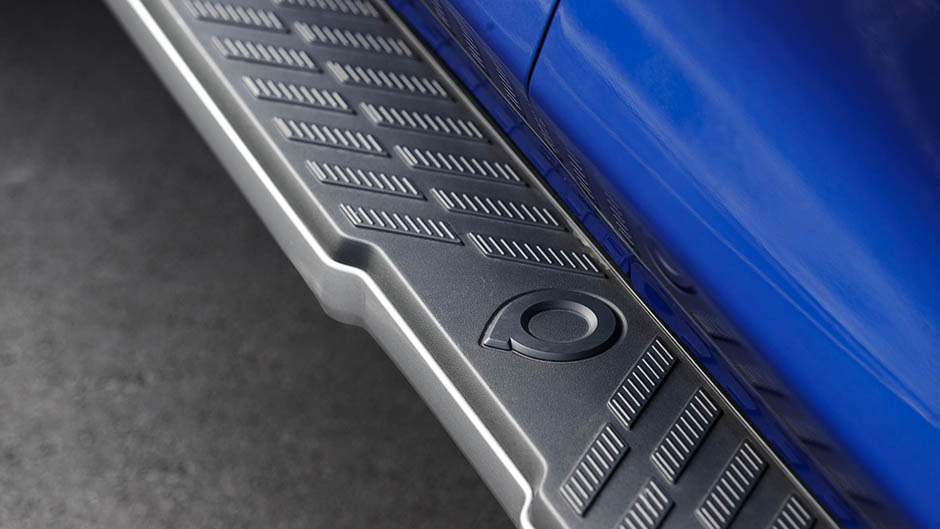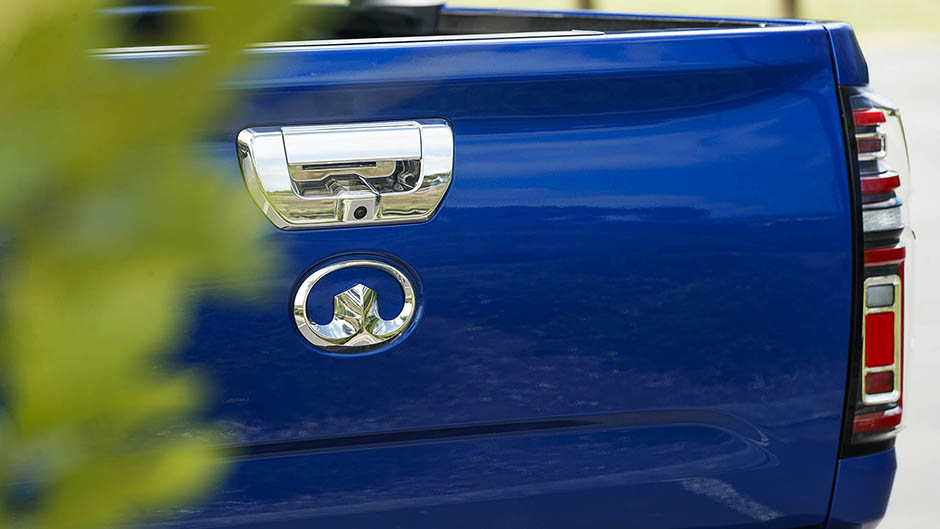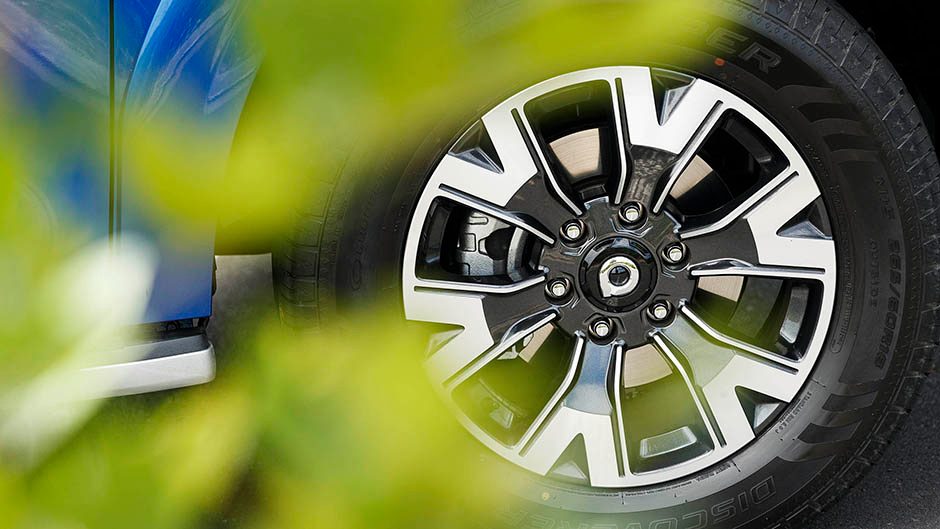2021 GWM Cannon L 4×4 review
Words Kyle Cassidy | Photos Tom Gasnier
GWM has an-all new ute ready to blast the competition away with its ultra-sharp pricing and big specification. But is it actually any good?
What’s in a name? A lot apparently. This new pick-up is a GWM but that’s the only giveaway in terms of badging. It’s quite refreshing for a ute; usually they are emblazoned with dorky decals and big branding. Not this one. It’s all a little mysterious, though if you know your manufacturer’s emblems, you’ll recognise the one on the tailgate as Great Wall, GWM standing for Great Wall Motors.
According to the press info, this is the ‘all-new GWM Ute’. Later they refer to it as the Cannon, a model name unique to South Seas markets. Is Cannon a catchy handle you ask? It has the potential to backfire, but it’s a better bet than the GWM Poer as it’s known in other markets, pronounced Power and standing for ‘Powerful, Off-road, Enjoyable and Reliable’.
There’s good reason for the rebrand; the first-gen utes from this mob were cheap but owning one would not have been a cheerful experience. So best to hit reset then. Great Wall’s SUV offshoot, Haval, makes some decent vehicles, and much about this new Cannon reminds us of those. This new pick-up even uses the same full chassis platform as the Haval H9. So it’s a ute based on a flash SUV but the rear end is adapted for work with leaf springs and a payload of 1000kg. The tow rating is down on the rest of its rivals at 3000kg, but so is the price. Way down in fact, Cannon blasting off at $29,990 including GST (so just $25,491 for those in the trade). That’s for the 4×2 manual, while the L (we think it means Limited) gets an auto and more spec for $35,990, while the 4×4 version is $39,990. Initially, all models are double cabs, the clear market preference.
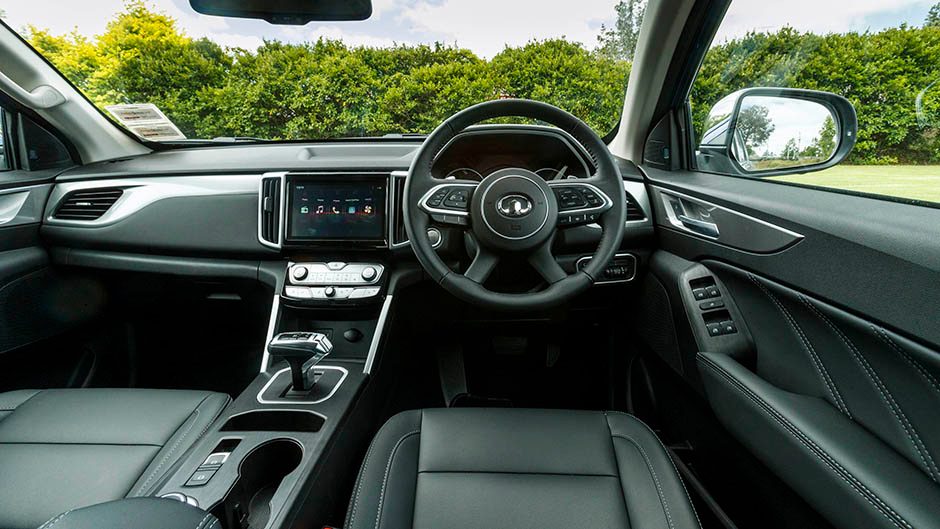
The engine is a 2.0-litre turbodiesel of GWM’s own making, generating 120kW at 3600rpm and 400Nm, on from 1500-2500rpm. The manual is a six-speeder while the auto is a ZF unit with eight gears. The 4×4 model has a similar Borg Warner torque on-demand system as the H9 so is predominantly rear-drive until help from the fronts is required. Fuel consumption for the 4×2 they rate at 8.7L/100km, the 4×4 L is 9.4, while we registered an average of 10.8.
Where the old Steed wrangled a lowly two-star crash rating and had zero collision avoidance features, GWM is keen to right those wrongs with the Cannon’s complete arsenal. The base model gets collision warning and AEB with pedestrian and cyclist detection. There’s lane keeping and departure warning, reverse camera with rear cross traffic alert, traffic sign recognition, tyre pressure monitoring, a kerbside camera, and rear parking sensors. Should it all go bad there are seven airbags with a centre bag up front. It hasn’t been smashed by the experts yet, but GWM would be hoping for a five-star rating. We await the results.
That’s not all though, for the entry model boasts a smart key, fake cow clads the seats, there’s a nine-inch touchscreen and it comes with Apple CarPlay and Android Auto. Along with the auto trans, the L gains a sports bar, 18s, adaptive cruise, heated front seats, powered driver’s seat, climate air, a surround view camera, tints, and an electronic parking brake. Also standard is a five-year/150,000km warranty. With all that spec and that sharp price, these guys mean business.
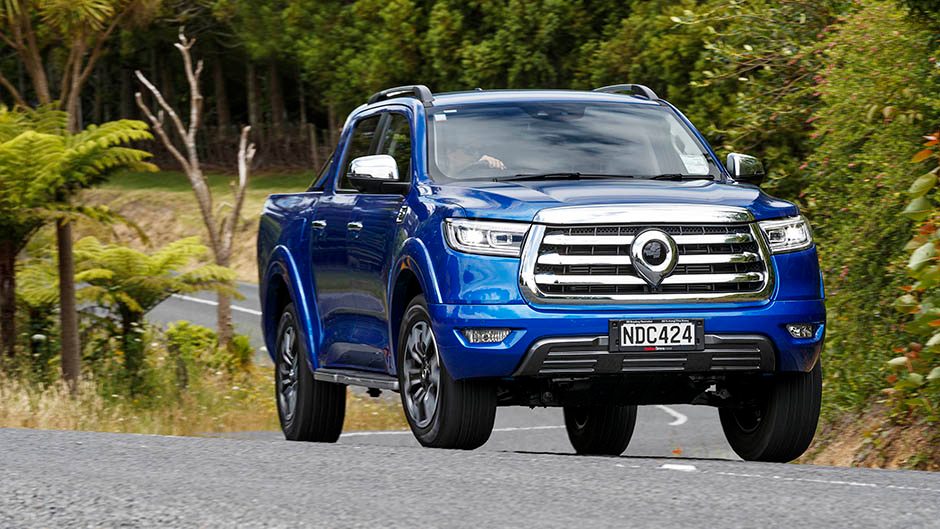
This looks the part, big and bold. It’s chief designer spent a few decades working for GM and Ford, and it tells. The big grille might put you off, but there’s nothing awry in the profile, with broad shoulders and bulging wheel arches. It sizes up well with the competition, bigger and wider than a Ranger even. Ground clearance they quote at 194mm with a rampover angle of 21.1 degrees. The 4×4 model has low-range and a lock function for the centre and rear diffs.
This Cannon lacks a little firepower compared with the others in class, the 2.0-litre engine working hard to move the 2100kg mass. It’s not the quickest of the one tonners, taking the best part of 11.4 sec to run to 100km/h, and 10sec on the overtake, which means you’re gonna need a good stretch ahead to get the job done safely. There’s a shot of turbo lag from idle too, the engine taking a second or two to fire the Cannon along, and then the surge arrives in a rush. Its torque-on-demand system ensures the grunt is converted to forward momentum without worry. It’s not a deal breaker, but mind the gap as they say, especially if you’ve got a decent load on. The auto creams the shifts – it offers refinement plus for a ute – and delivers well programmed downshifts when braking. The electric power steering is nicely calibrated, and light at urban speeds but the turning circle is large, even for a ute.
Its unladen urban ride only transmits the odd jiggle, and is about mid-pack versus the rest. It feels more unsettled at about 80km/h yet gets better at 100km/h. Weird. The damping isn’t perfect, it can hit some bumps hard, but it has the roll control sussed in that it takes a set quickly heading into a bend and the rear end is faithful; there’s no hint of unruly roll oversteer here and neither is it worried by any mid-corner bumps. The steering is well weighted, if a little slow but gives you the heads up when things are getting a bit hot. The Cooper tyres hold on nicely, even when going silly, the sidewalls taking a beating but still sticking. And the ESP is well tuned, working seamlessly in the background. The brakes are a tad underdone though, and are squishy under foot.
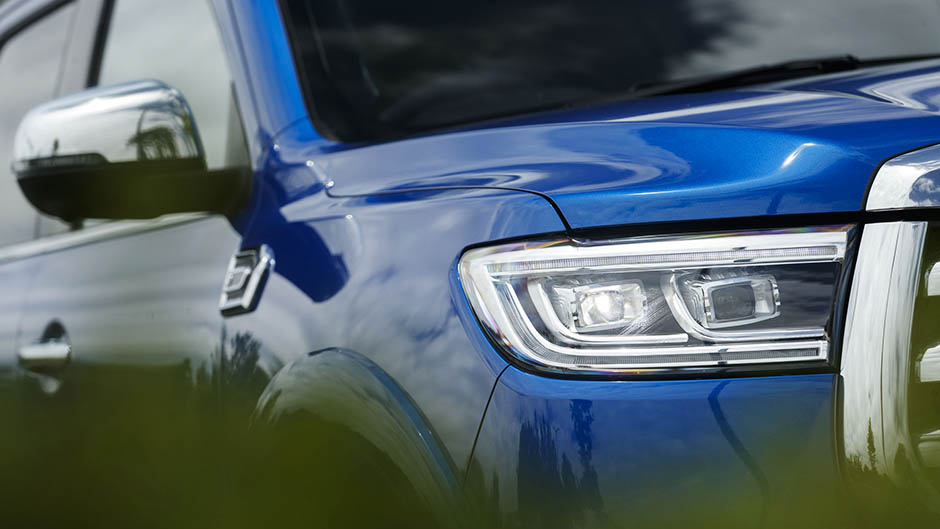
We clicked the drive mode to Sport, had to at least once, which keeps the engine and trans working harder. But it’s not really necessary, the eight speeder ensures it makes the most of what torque is available. It’s a smooth shifter, not overly quick on kickdown but gives the Cannon long legs, the engine churning at 1800rpm on the open road.
The T.O.D 4×4 set-up helps it eat up gravel roads, the rear not concerned about hopping about on those corrugations under power. And here too the ESP is well calibrated. It’s not a bad truck to drive in other words.
Tailgaters won’t like the safety minder that dings away when you’re too close to the car in front, and the lane keeping is persistent. Most of the systems are switchable though and fairly easy to neuter.
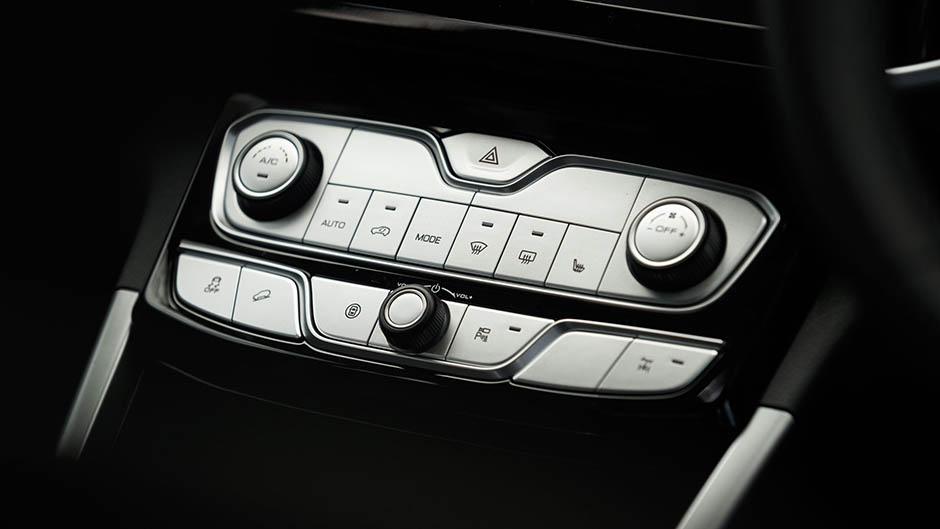
The cabin’s pretty slick too. There are no rough, sharp or poorly fitted trim pieces and the surfaces are rather swish for a ute. The centre stack is straightforward and functional, so too the infotainment screen. And the resolution is sharp, giving a clear image for the surround view camera. In the back it’s genuinely roomy, the seat comfy, with the requisite three-point belt in each spot, and the Isofix points are easy to locate for those clicking kid’s seats in and out often.
The tray measures up to the competition, wide between the wheel wells and a decent length too. Limited comes with a spray-in tubliner, and the tailgate has twin gas struts to calm it on the way down – merely open and release – and ease it back up. And for those who find it a stretch to get a leg up into the tray, this has a cargo step ladder that extends out from the top of the tailgate.
This is a pretty comprehensive effort from GWM, especially at the price. The initial quality seems sound too, though the challenge will be getting people to take it seriously, given recent history. But there’ll be no harm in trying, and you might even end up happy, especially when you see how much you still have left in your bank account, thanks to its astounding value.
| Model | GWM Cannon L 4×4 |
| Price | $39,990 |
| Engine | 2000cc, IL4, TDI, 120kW/400Nm |
| Drivetrain | 8-speed auto, on-demand AWD |
| Fuel Use | 9.4L/100km |
| C02 Output | 280g/km |
| 0-100km/h | 11.45sec |
| Weight | 2124kg |


